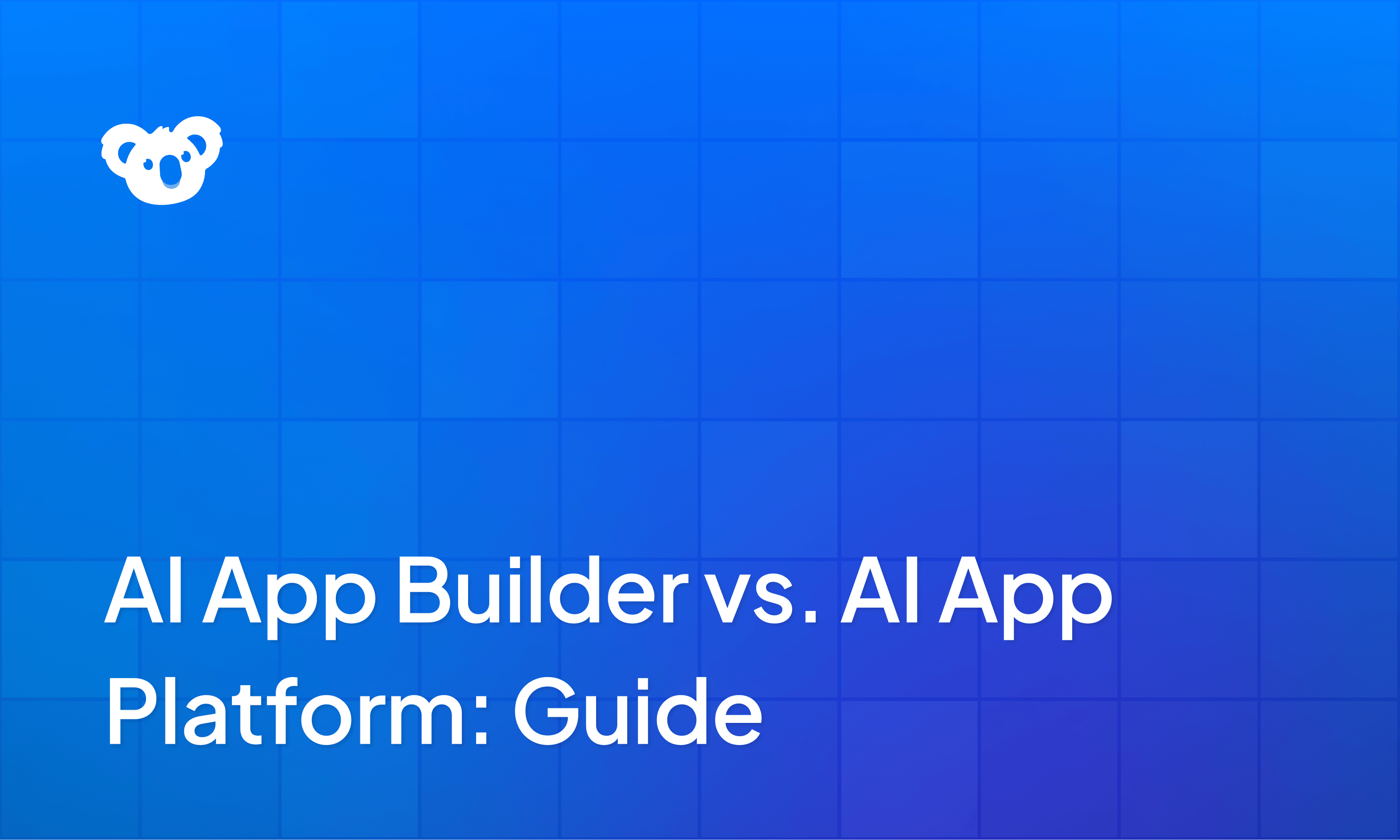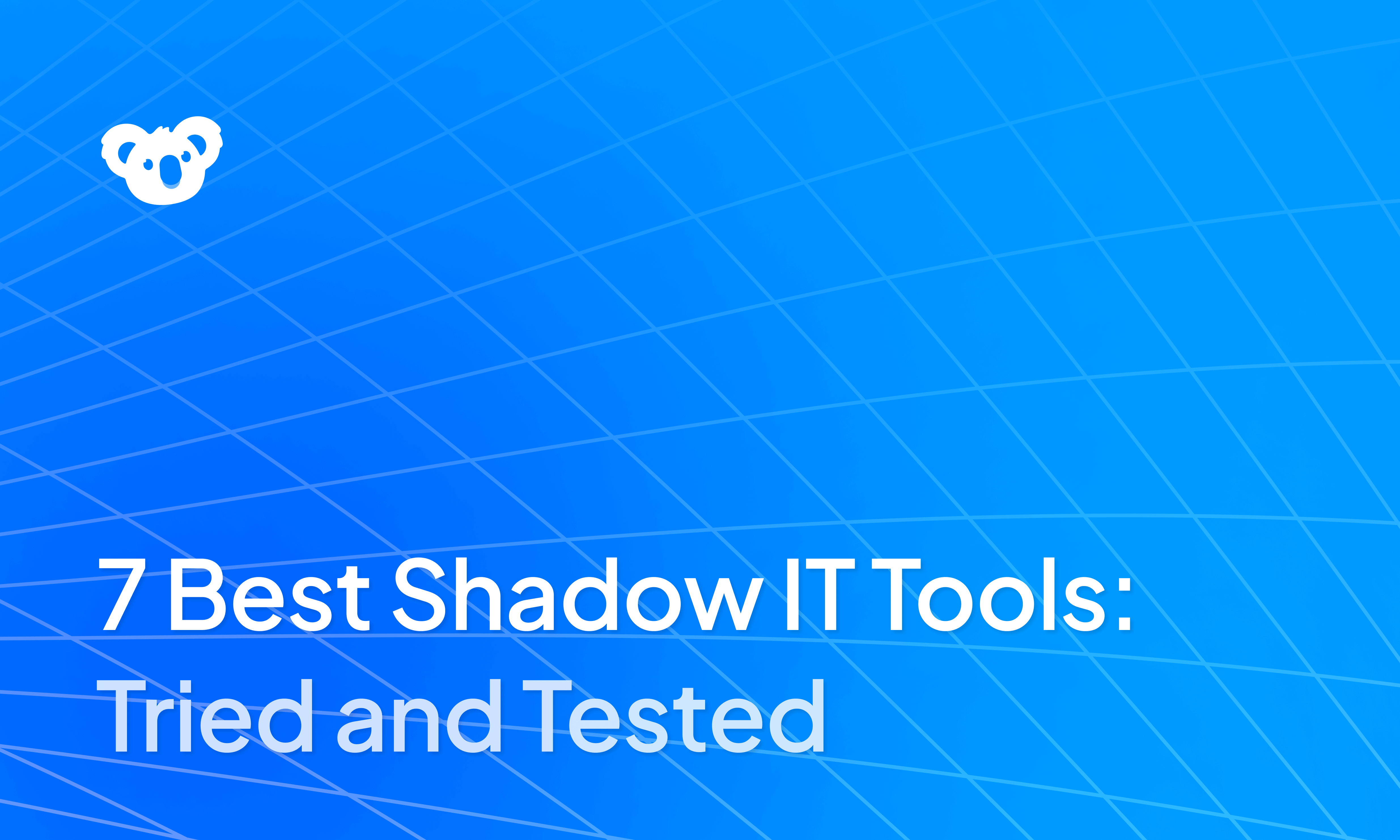


Low-code platforms promise speed and agility, but most organizations discover that democratizing development without proper controls creates more problems than it solves. The challenge? You need a governance framework that keeps apps within your enterprise security and operational standards while preserving the speed advantage of low-code.
In this article, we’ll cover:
- Why traditional IT governance fails with low-code development
- What good low-code governance looks like
- How to scale guardrails that empower teams instead of blocking them
What is low-code governance? 30-second definition
Low-code governance is the set of policies, controls, and processes that keep low-code applications secure and compliant at scale.
It controls:
- Who’s allowed to build apps and in what environments
- How those apps access data and what they’re allowed to touch
- Where apps get deployed, like dev vs prod
- How changes are tracked so there’s auditability and version control
For example, you can have a policy that restricts deployments to only internal users behind SSO.
What are the 7 key components of low-code governance?
Low-code governance consists of seven core components that work together to maintain organizational control at scale.
They include:
1. Access control and permissions
Access control defines who can build, edit, deploy, and view applications within the platform. Most organizations assign permissions based on job function with RBAC. Business analysts may get sandbox access to prototype ideas, while developers receive broader building rights across multiple environments.
These role assignments connect to granular permissions that restrict access to specific data sources, credentials, and sensitive environments.
2. Environment separation and deployment controls
Environment management creates distinct spaces for development work, testing, and production systems. Applications start in development environments where builders can experiment freely, then move through testing phases before reaching live users.
Deployment controls govern this progression by requiring approval workflows and testing checkpoints. This separation prevents teams from promoting untested changes to production systems.
3. Data security and integration management
Integration management controls how apps connect to databases, APIs, and external services. Platform teams typically maintain catalogs of pre-approved integrations that are safe to use. These approved connectors come with security protections built in, like proper authentication and limited access scopes.
Credential storage systems keep database passwords and API keys secure, while data access policies determine which teams can connect to which systems.
4. Audit logging
Audit systems capture every significant user action, from permission changes to data access events to application modifications. These logs feed into compliance reporting systems that enterprises use for regulatory requirements and security investigations.
5. Change tracking
Change tracking maintains version history for application components, configurations, and business logic. Together with audit logs, these systems create the paper trail that helps governance teams trace who made changes and resolve issues quickly.
6. Standards and reusability framework
Standards frameworks define the approved UI components, coding patterns, naming conventions, and documentation that builders must follow. Component libraries turn these standards into reusable building blocks that enforce design consistency while reducing development time.
Templates provide builders with starting points that already meet organizational requirements, so new applications inherit security settings, authentication patterns, and design standards automatically.
7. Monitoring and lifecycle management
Lifecycle management tracks application ownership, usage patterns, and operational health across the entire platform. Monitoring systems measure performance metrics, uptime statistics, and user adoption rates. This data helps platform teams identify which applications need attention, which ones can be retired, and where to focus improvement efforts.
Why does traditional governance fall short?
Traditional IT governance models fall short with low-code because they rely on centralized processes. They cannot keep up with the decentralized and accelerated pace of low-code development.
Here are some of the issues with legacy governance models:
- Speed vs bottlenecks: Traditional governance relies on manual code reviews, approval committees, and staged release processes that can take weeks or months. Low-code users expect to build and deploy applications in days or weeks. A checkpoint-heavy approach kills the speed advantage.
- Non-technical builders change the risk profile: Traditional governance assumes builders understand security principles and coding best practices. Business users building low-code apps often lack this background. They can unknowingly introduce risks.
- Centralized oversight doesn’t scale: Traditional models rely on a centralized IT team to review, deploy, and maintain apps. But low-code decentralizes development. Teams across the org are building on their own. IT can’t inspect every app without becoming a giant blocker. The old oversight model doesn’t scale.
Read more on how IT transformation is reshaping internal development.
What effective low-code governance looks like in practice
Effective low-code governance shifts from preventing action to enabling safe action. Organizations that get this right focus on three core principles:
Set clear rules up front
Instead of reviewing every app manually, define what’s allowed:
- What systems can people connect to
- Which components and APIs are approved
- Where apps can be deployed (staging vs. production)
Track everything
Every app, workflow, and API call should leave a trail. You need logs for:
- Who built or changed what
- What data apps accessed
- When changes were deployed
Automated checks
Manual approval queues are governance bottlenecks. Instead, automate:
- Security scanning (e.g., flag exposed secrets, bad API calls)
- Data residency checks
- Deployment gating based on risk or scope
Share components and patterns
Standardize what works. Offer teams:
- Prebuilt templates
- Approved integrations
- Sample apps and workflows
Also, document best practices and keep them accessible. This makes apps more consistent and easier to maintain.
Low-code security: What to lock down vs. enable
Low-code platform security works best when you control the infrastructure and enable everything else that drives business value and user satisfaction.
Focus on protecting the highest-risk areas while enabling safe development that keeps business moving. Lock down:
- Sensitive data access: Restrict direct database connections, API keys, and system credentials completely. Instead, provide pre-configured connectors that handle authentication automatically and restrict access to approved data sets.
- Unsupervised AI output: Control AI-generated code that goes directly to production without human review. Set up automated scanning for AI-generated code that might introduce security vulnerabilities or violate compliance policies.
- Prod-level changes: Control direct production deployments and system-level modifications. Business users build and test freely, but production stays behind controlled promotion processes.
Give teams the freedom to build, test, and share safely by enabling:
- Sandbox experimentation: Give teams unrestricted access to development environments. Teams should connect to test data, try different components, and iterate without approval workflows.
- Reusable patterns/templates: Provide self-service access to approved UI components, data connectors, and workflow templates.
- Cross-team collaboration and sharing: Let teams share applications, components, and templates across the organization.
How Superblocks supports developer-led governance
Superblocks embeds governance controls directly into every step of the development process. It has built-in role-based access controls (RBAC), audit logs, and Git-based change management that gives IT centralized visibility and control.
Superblocks offers:
- Granular access control: Role-based permissions connect directly to enterprise identity systems through SSO and SCIM. Only authorized users can build, modify, or access sensitive functions.
- Context-aware AI: Clark, the AI agent, generates apps with full awareness of your existing data sources and access policies. You can also sanitize and customize prompts per your policies.
- Git-based change management: All application changes are versioned and tracked using Git. Dev teams can review, approve, or roll back updates through familiar CI/CD workflows.
- Hybrid deployment: The on-premise agent keeps sensitive data processing within enterprise networks while providing cloud-based collaboration features.
- Reusable components: Platform teams enforce org-wide policies by packaging approved UI elements, connectors, and logic into reusable building blocks. When they update the components and governance controls, the changes propagate automatically across the organization.
- Integrated observability: Superblocks tracks every user action, data access, and permission change. You can feed these logs into your existing monitoring tools for reporting and security investigations.
5 steps to set up scalable governance
To establish scalable governance across internal development, organizations must adopt a structured, repeatable approach that adapts to both business needs and technical complexity.
The following five steps outline a practical roadmap to achieve consistent oversight:
- Inventory current tools: Catalog what already exists across your organization. Document which teams are building what, which data sources they're connecting to, and which business processes depend on these applications. This inventory reveals the real scope of your governance challenge.
- Classify apps by sensitivity: Create clear categories (low, medium, or high) based on data sensitivity, regulatory requirements, and business impact. This classification guides the level of oversight and compliance necessary for each app.
- Establish review and deploy workflows: Design promotion paths that match your risk categories. High-risk apps may move through development, security review, and user acceptance testing. Medium-risk apps can skip some manual reviews but include automated security scans. Low-risk apps deploy directly to production.
- Automate observability: Set up monitoring and logging that capture user access patterns, data flow, application performance, and policy compliance automatically. Integrate these logs with your existing security and compliance tools so governance teams have end-to-end visibility across all development activities.
- Create safe build zones: Establish development environments where teams can experiment freely without affecting production systems or sensitive data. Provide realistic test data and approved connectors that mirror production capabilities. Make these environments self-service to avoid IT provisioning delays.
Best practices for low-code governance
Low-code platforms make it easy to build, but without guardrails, they can create just as much risk as shadow IT. These best practices help you govern low-code development.
Do the following to balance control and flexibility:
- Start with templates and components: Provide pre-built starting points that embed governance requirements automatically.
- Use tiered risk categories: Apply different governance levels based on data sensitivity and business impact.
- Automate compliance checks: Build security scanning and policy validation into deployment workflows.
- Enable self-service development: Let teams build freely in sandbox environments with realistic test data.
- Integrate with existing tools: Connect governance logging to your SIEM, identity systems, and monitoring infrastructure.
- Focus on reusability: Create shared component libraries that enforce standards while accelerating development.
- Monitor usage patterns: Track which applications get used, which teams are most active, and where problems occur.
Governance shouldn’t feel like a blocker, so don’t let it become one:
- Block everything by default: Restrictive policies kill adoption and drive teams toward shadow IT solutions.
- Ignore existing applications: Catalog and assess current low-code tools before implementing new governance frameworks.
- Rely on manual reviews: Human bottlenecks don't scale with distributed development across business teams.
- Treat all apps the same: Internal productivity tools need different governance than customer-facing applications.
- Forget about rollback plans: Every deployment workflow needs quick recovery options when applications break
Build secure internal tools with Superblocks
Superblocks gives you fast, AI-powered development inside a secure, governed, and guardrailed platform. Every app respects enterprise policies from day one.
We are able to achieve this balance thanks to our wide range of features:
- Multiple ways to build: Generate code with AI, design with the visual app builder, start from UI templates, or extend applications using React, Python, Node.js, or SQL for full customization.
- Full code extensibility: Use JavaScript, SQL, and Python for fine-grained control over execution logic. Customize your UIs by bringing over your own React components.
- Exportable code: Own your applications fully. Superblocks lets you export all your apps as standard React apps so you can host and maintain them independently.
- Hybrid deployment: Deploy OPA within your VPC to keep all your data and code executions within your network. Keep managing your app, workflows, and permissions through Superblocks Cloud.
- Integrations with systems you rely on: Provides 50+ native integrations for databases, AI tools, cloud storage, and SaaS apps. Connect to your data sources where they are. No need to migrate data into Superblocks.
- Automatic deployments: Integrates directly with CI/CD tools like GitHub Actions, CircleCI, and Jenkins, so you can deploy updates just like any other codebase.
- Git-based source control: We support Git-based workflows, so you can manage your apps in your own version-controlled repository.
If you want to build quickly while staying in control, schedule a demo with one of our product experts and see how Superblocks can help.
Frequently asked questions
What are common low-code security risks?
Common low-code security risks include unrestricted data access, weak authentication, hardcoded credentials, and missing input validation. Many platforms also lack built-in logging or audit trails, making it harder to trace changes or detect abuse.
How do you manage shadow IT in low-code platforms?
You manage shadow IT by providing teams with a governable platform with visibility, permissions, and usage policies. Centralize access, disable personal or unmanaged workspaces, and log all app creation and deployments to keep everything discoverable and auditable.
Can citizen developers follow governance?
Citizen developers can follow software development governance best practices if they’re built into the platform. That means enforcing access controls, offering safe templates and connectors, and preventing risky actions through system-level rules, not just documentation.
How does Superblocks support governance?
Superblocks supports governance through enterprise-grade security features like role-based access control, SSO, audit logging, and approval workflows. It also separates environments, tracks every change, and allows full-code visibility even for visual apps.
What are low-code platform best practices?
Low-code platform best practices include using staging environments, standardizing data sources, enforcing RBAC, and logging all user actions. Teams should also avoid hardcoding credentials, reuse approved components, and document each app clearly.
What are good RBAC practices?
Good RBAC practices start with clearly defined roles and least-privilege access. Teams should assign permissions by group, review roles regularly, and restrict access to sensitive data or actions based on user responsibilities.
What’s the best way to enforce policies automatically?
The best way to enforce policies is to build them directly into the platform through automation. Set up approval workflows, block unapproved integrations, scan for secrets, and require metadata tagging to reduce manual review overhead.
Should IT or devs own internal apps?
IT should own the platform, permissions, and policies, while individual apps can be owned by developers or business teams.
Stay tuned for updates
Get the latest Superblocks news and internal tooling market insights.
You've successfully signed up
Request early access
Step 1 of 2
Request early access
Step 2 of 2
You’ve been added to the waitlist!
Book a demo to skip the waitlist
Thank you for your interest!
A member of our team will be in touch soon to schedule a demo.
Table of Contents






